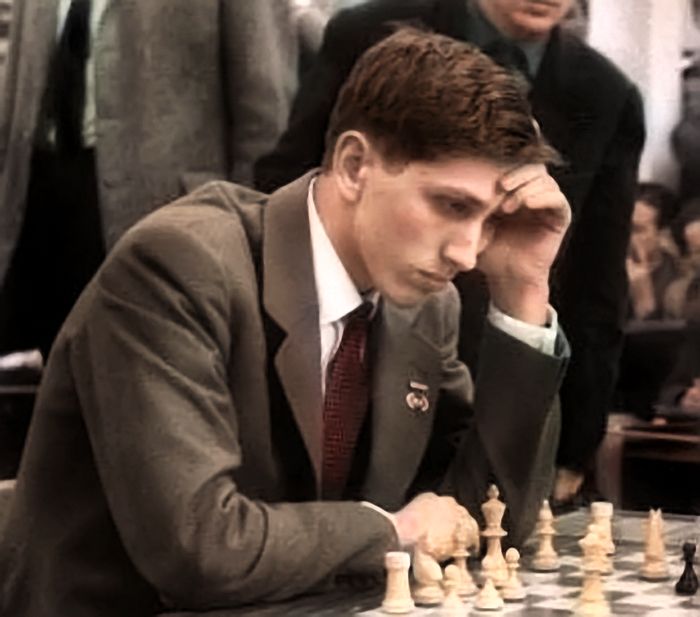
Has The King's Indian Attack Been Forgotten?
The Chess.com member Kingdom_chess2 asked: “Why is the King’s Indian Attack less popular at the top level? Is there any specific reason?”
JS: The KIA (King’s Indian Attack) was explored (by very strong players!) in the 1950s. One of those KIA explorers was Fischer, who played it (starting with 1.Nf3) in 1956. Later in 1957 Fischer made a change, using the same setup with 1.e4 (1.e4 c5 2.Nf3 Nc6 3.d3 e6 4.Nbd2 d5 5.g3) instead of 1.Nf3.
Fischer eventually gave up the KIA, but when Pal Benko started to wipe opponents out with this system Fischer took notice and embraced it again in the mid-60s to the 70s.
In general White is trying to create a setup with pawns on e4 (which often moves to e5) and d3, kingside castling, knights on f3 and d2, and g2-g3 followed by Bg2. Other common moves are Re1 and h2-h4. Of course, Black has quite a few options too. His d-pawn can end up on d6, or it can (and often does) take a two step leap via …d7-d5. Black can also fianchetto his dark-squared bishop on g7, or Black’s dark-squared bishop can find a home on e7 or even d6.
If Black’s d-pawn moves to d5, then it can remain there or trade his d-pawn for White’s e-pawn (this often leads to a positional battle. See the game, Robert Fischer vs. Ismet Ibrahimoglu).
One of the most popular setups is the following:
This position (after 12...a4) is rife with tactics and attacks. White’s usual reply was 13.N1h2 (intending an eventual Nh2-g4 followed by h4-h5-h6) Black would follow with 13...a3 14.b3 when Black has created holes on c3 and d4. In some cases Black can crash open the queenside with a well-prepared ...c5-c4, or he can move a knight to b5 and c3 when White’s rook on a1 has to babysit the a-pawn forever. Black’s knight can also move to d4 when the knight is powerfully placed. If the d4-knight is taken then the c-file is open for Black’s rooks.
However, Fischer (against Myagmarsuren in 1967) came up with a new move that took away some of Black’s counterplay — 13.a3! I will discuss this move in the Fischer vs. Myagmarsuren game.

Fischer via Wikipedia.
In some cases White can move his f1-knight to e3 (instead of h2) when it still has access to g4, but it also sets up tactics like Nxd5. Here’s a famous example:
This is a typical pawn structure in this variation. White’s e-pawn is a real pain for the second player since if Black tries to trade it with ...f7-f6 then the e-file with be opened and White’s pieces will take aim at the e5-square and the e6-pawn. So, if White’s e-pawn remains on e5 (which gives White a kingside space advantage) and White’s h4-pawn marches down the h-file, White has a seriously strong kingside attack.
On the other hand, Black’s queenside space is impossible not to notice, and Black intends to make full use of it by marching those pawns down the board, either ripping open queenside lines or creating weaknesses in White’s camp)!
In a nutshell: both sides have chances!
Let's continue the game:
EARLY TRIES WITH THE KIA
The KIA was played in the early 1950s, and many strong players gave it a try. Here’s an example:
Years later, Petrosian struck again:
BENKO TAKES UP THE KIA
A YOUNG FISCHER PLAYS THE KIA
Fischer played the KIA as early as 1956. And he continued making use of it (with great results) in 1957. He played quite a few during those years (with great results), but I’ll only show you two.
Now I’ll answer the question Kingdom_chess2 posed: “Why is the King’s Indian Attack less popular at the top level? Is there any specific reason?”
Mr. Kingdom_chess2, I think the KIA is still quite popular in amateur chess. Regarding grandmaster chess, it’s still seen at the highest levels. However, the tactics and tricks that used to blow Black out of the water are now known to everyone. Thus what was once a very dangerous line has pretty much been tamed (the mates from the past are now rare, and many games end up with a murky, though complex, kind of game).
In general the vast majority of grandmasters make use of a modern repertoire. Of course, there are grandmasters that look for crazy openings, or quiet openings that allows them to avoid theory and just play chess. Lines like the KIA are used now and then, and the opening is still a killer in amateur chess.
MODERN GAME WITH 13.N1h2
Yes, yes, I did give a lot of games. However, I decided that if the KIA fans want to play this opening then key games will help them understand it. So, merry Christmas! Xmas pudding. Reindeer (they are delicious). Santa getting lodged in the fireplace. The Christmas tree (we Jews call it the Hanukkah bush).
WHAT? My wife just told me that it's not Christmas?! DOH!






